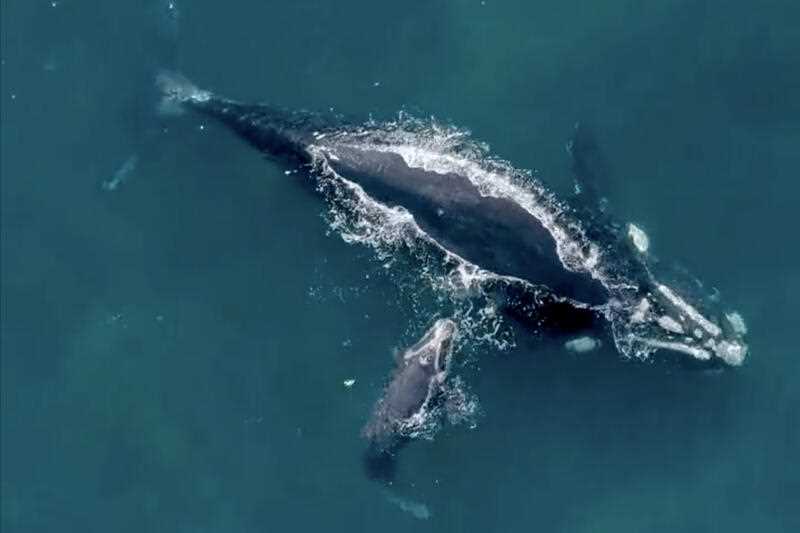Maritime authorities say the female southern right whale and her calf spotted basking in shallow waters off Sydney have moved on again, after taking a few days to relax in the coast’s warm shallow bays.
Whale conservation group ORRCA said on Sunday the pair moved south overnight to Malabar Beach after spending Saturday resting and nursing in shallow waters northeast of Long Reef off the city’s northern beaches.
After spending Sunday close to shore, the pair were seen heading out into deeper waters in the afternoon, to resume their journey south.
ORCCA and NPWS rangers said they will continue to keep an eye on the mother and her calf.
The rare duo were spotted in waters of the NSW mid north coast late in July, and have been tracked closely as they make their way down the coast before their treacherous journey to the Antarctic.
NSW Parks and Wildlife Service authorities asked the public to keep at least 300 metres away to avoid disturbing the whales which might cause them to move away, and tire them unnecessarily.
Quiet, undisturbed time in shallow, sandy bottom bays and protected beaches is a critical stage in southern right whale calf development.
The calf was expected to consume about 300 litres of milk per day to gain the strength before the long voyage towards the Antarctic, according to park ranger Andy Marshall.
“The biggest threat to the survival of southern right whales in NSW waters is disturbance from people getting too close,” he said.
Any disturbance to the whales not only compromises a calf’s ability to nurse and develop, but can also drive them out into deeper waters, where they are exposed to predation by orcas and sharks, the ranger said.
Mr Marshall said the calf was born about two days before the first sighting and have delighted whalewatchers by taking breaks at Coffs Harbour, Scott’s Head, Port Macquarie, Forster, Port Stephens, and Swansea along the NSW north coast.
Southern right whales are an endangered species, with fewer than 270 in the south-east Australian population.
This calf is one of only two recorded in NSW this year.
By Kathryn Magann in Sydney
Get local, national and world news, plus sport, entertainment, lifestyle, competitions and more delivered straight to your inbox with the Canberra Daily Daily Newsletter. Sign up here.



